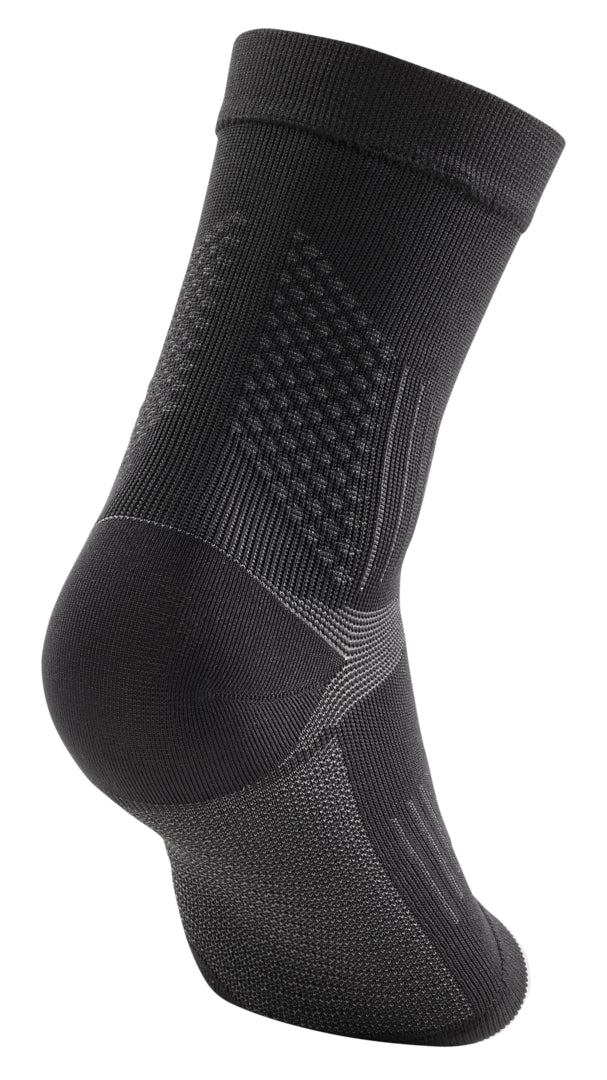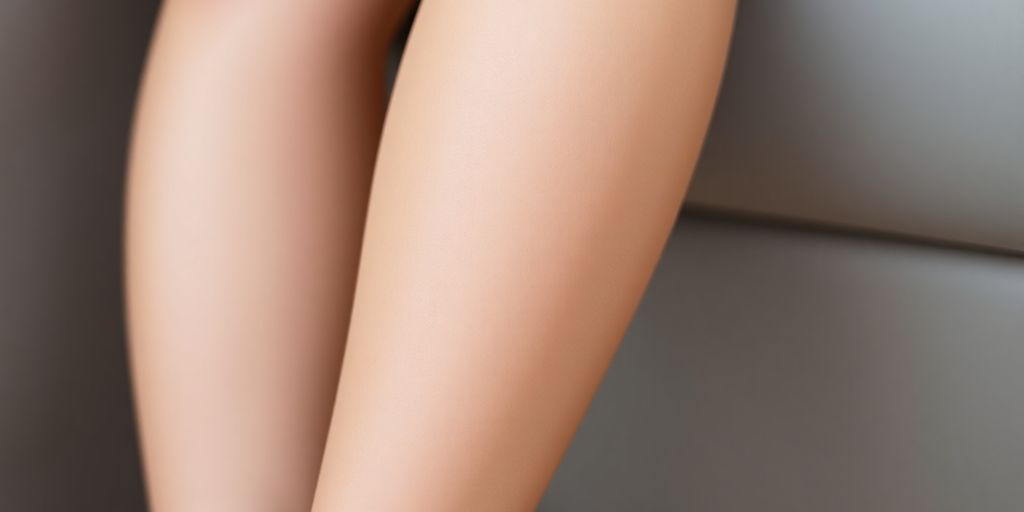Plantar fasciitis is a painful condition that affects roughly 2 million Americans every year. While the condition is treatable, it is also extremely uncomfortable. For this reason, many people dealing with plantar fasciitis want to recover as quickly as possible, without the need for invasive surgery. Fortunately, compression socks can help ease the symptoms of plantar fasciitis when used as part of a treatment plan overseen by a physician.
So, how do compression socks help with plantar fasciitis? At what times should you wear compression socks for the best results? Finally, where can you find high-quality compression socks for plantar fasciitis?
In today’s guide, we will answer all of these questions and more, but first, let’s look at what the condition is and how it comes about:
What Is Plantar Fasciitis?
If you have severe heel pain, there is a chance that it is caused by plantar fasciitis. In fact, plantar fasciitis is one of the most common causes of pain in the heel of the foot. More specifically, the condition causes pain in the area of the foot known as the plantar fascia, which is a layer of tissue along the bottom of the foot that connects the heel bone to the toes.
The plantar fascia plays an important role in the foot, particularly when it relates to movement and the support of your body weight. This tissue acts as a kind of shock absorber whenever you take a step or put pressure on your foot. It helps protect the arch of your foot and generally makes movement easier and more comfortable. Over time, excessive stress on this area can cause the tissue to tear, which leads to the pain and swelling associated with plantar fasciitis.
The most common symptom of plantar fasciitis is a sharp pain in the heel. It is most often at its worst in the morning or during long periods of physical inactivity. In some cases, the pain may worsen after physical exertion, though this is less common.
There are various underlying factors that can increase your risk of developing plantar fasciitis, including:
- Physical Activity - If you take part in activities that put a lot of pressure on the arches of your feet, including ballet, marathon running, or high-intensity sports, it could speed up the onset of conditions like plantar fasciitis. If you spend long days on your feet due to your job, this could also contribute to foot pain and further complications.
- Age - People over the age of 40 are most likely to experience the condition, as the muscles and tissues in the foot are not as strong as they are in younger people.
- Body Type - If you are overweight or obese, this can put greater stress on your feet and increase the risk of conditions like plantar fasciitis.
- Foot Mechanics - Finally, if you have high arches or an abnormal walking pattern, it could affect how weight is distributed across your foot when you move around and increase the risk of developing plantar fasciitis.
Treatment plans for plantar fasciitis vary widely based on your specific circumstances and lifestyle. You’ll need to talk to your doctor to find the best treatment options for you. That said, rest and compression garments are often used to ease the pain and give the plantar fascia time to heal. In more severe cases, corticosteroid injections or even surgery may be required. But again, always talk to your doctor to develop a treatment plan that works for you.
How Compression Socks Help Plantar Fasciitis
Compression socks are one of the simplest and most effective treatments for mild-to-moderate plantar fasciitis. They provide a variety of benefits that can alleviate symptoms and even speed up the healing process, including:
- Enhanced Circulation - Compression socks provide pressure that helps speed up blood flow in the affected area. Not only is this an easy way to improve circulation in the feet and ankles, but it can also accelerate the healing of the plantar fascia.
- Reduced Pain & Swelling - The combination of pressure and support during movement can ease the pain in the heel. Moreover, compression lowers fluid buildup in the area and reduces inflammation.
- Structural Support - Much like a shoe with ample arch support, a compression sock provides much-needed structural support to people dealing with plantar fasciitis. The compression sock can reduce stretching of the tissue in the foot while also making it easier to move without exacerbating any pain or swelling.
- Reduced Risk of Re-Injury - If compression socks are worn consistently during the recovery period, they can greatly reduce the risk of further tears to the plantar fascia. This is especially useful if you want or need to continue engaging in physical activities but don’t want to experience more pain or complications.
It is important to remember that compression socks are often just one element of a more comprehensive treatment plan. Your doctor may recommend a combination of treatments, like applying hot or cold compresses to the area, getting temporary rest from physical exertion, and taking OTC pain medication. Always consult your doctor before starting any new treatments or changing your existing treatment for plantar fasciitis.
When Should You Wear Compression Socks For Plantar Fasciitis?
Naturally, the time of day or night that you should wear compression socks, as well as the length of time you should wear them during recovery, will vary based on your condition. If your symptoms are more severe and make it difficult to go about your daily life, you may be required to wear compression socks for long periods of time.
That said, it is generally safe to wear compression socks during the daytime, whether you are engaging in physical activities or resting your feet. Compression socks are especially helpful if you need to stand on your feet for more than an hour at a time. If you want to exercise or you’re involved in athletic sports, wearing compression socks during fitness events or post-workout periods can help reduce the risk of injuries related to plantar fasciitis.
Just remember that compression socks should never cause discomfort or pain. In fact, they should provide the exact opposite — comfort and pain relief. So, if you don’t feel comfortable wearing compression socks for plantar fasciitis, you may need to consult with your doctor about the size of your garments, as well as how often you should wear them.
Can You Sleep In Compression Socks For Plantar Fasciitis?
The short answer is yes, you can wear compression socks at night or whenever you sleep. Many people find that wearing specialized compression garments at night can make sleeping more pleasant, with fewer interruptions due to pain or discomfort. Using compression socks at night can also help gently stretch the plantar fascia, which can help reduce the pain and swelling you may experience when waking up.
Best Compression Socks For Plantar Fasciitis
There are plenty of high-quality compression socks that can help treat or alleviate the symptoms of plantar fasciitis. If you’ve spoken with your doctor and you’re ready to start using compression socks, be sure to check out any of the following models offered through Compression Health:
- CEP Ortho+ Plantar Fasciitis Sleeve
- CEP The Run Men's Mid-Cut Socks 5.0
- CEP The Run No Show Socks 5.0
We hope you found this guide on compression socks for plantar fasciitis both useful and informative! Are you currently in the market for compression socks or other compression wear? If so, be sure to reach out to Compression Health today!




Share:
Compression Socks For Edema
Incrediwear Knee Sleeve Guide